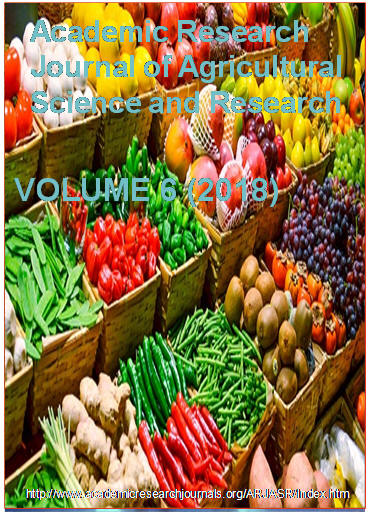| ARJASR |
Academic Research Journal of
Agricultural Science and Research |
||||||||||||||||||||||
|
Academic Research Journal of Agricultural Science and Research Vol. 6(7), pp. 396-405. September, 2018. ISSN: 2360-7874 DOI: 10.14662/ARJASRD2018.052 Full Length Research GGE Biplot Analysis of Genotypes by Environment Interaction on Bread Wheat (Triticum aestivum . L) Genotype in Ethiopia
Gadisa Alemu1* and Hussein Mohammed2
1 Kulumsa Agricultural Research Center, Assela, Ethiopia 2 Hawassa University College of Agriculture, Hawasa, Ethiopia Correspondence author: Gadisa Alemu, National Wheat Research Program, Kulumsa Agricultural Research Center, Assela, P.O. Box 489, Ethiopia. Tel: +251-910952641. E-mail: gadalemu@gmail.com
Accepted 18 September 2018
The study conducted was to identify the best performing high yielding stable advanced bread wheat genotype for selection environments, the identification of mega environments and analysis of the ideal genotype and environment by GGE biplot method. 15 bread wheat genotypes were evaluated using RCBD with four replications at six different locations in Ethiopia. The results of combined analysis of variance for grain yield of 15 bread wheat genotypes indicated that genotype, environment and GEI were highly significant (P<0.001). The factors explained showed that bread wheat genotypes grain yield was affected by environment (35.28%), genotype (33.46%) and GEI (31.45%).The first two PC axes of GGE explained 88.7% of G+GEI and divided the six locations into three major groups: Group1 included Asasa, Kulumsa and Arsi Robe (moderately discriminating locations); Group2 had the highland wheat producing locations Holeta and Bekoji (most discriminating locations), while Group3 contain Dhera (least discriminating location), a moisture stress location in the rift valley. Locations within the same group were closely correlated and provided redundant information about the genotypes. Testing can be performed in any one of the locations within a group. Genotype ETBW8078 and ETBW8459 were more stable as well as low yielding. Considering simultaneously yield and stability, genotype ETBW9045 and Hiddase showed the best performances suggesting their adaptation to a wide range of environments. Lemu, ETBW8084 and ETBW8065 were considered as desirable. Genotype ETBW8075 was the least stable with low yield and had a large contribution to the GEI, having the longest distance from the average environment. ETBW9470 was specifically adapted to Group1 locations while ETBW8070 was adapted to Group2 environments. Based on yield performance advanced lines ETBW9470 and ETBW8070 are recommended to be included in variety verification trials for further release.
Key words: grain yield, location, adapted, stable, GEI
How to cite this article (APA Style): Gadisa, A., Hussein, M. (2018). GGE Biplot Analysis of Genotypes by Environment Interaction on Bread Wheat (Triticum aestivum . L) Genotype in Ethiopia. Acad. Res. J. Agri. Sci. Res. 6(7): 396-405 |
|
|||||||||||||||||||||
